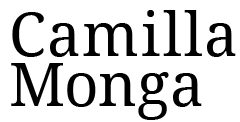Concrete
We want to create the purely organic building, boldly emanating its inner laws, free of untruths or ornamentation_
W. Gropius
Walter Gropius' intents declaration synthesizes the common ground for all the artists belonging to the Bauhaus, yet it seems to ideally reference to the American Dance Formalism of the 40's and 50's. Formalist Dance choose to abstract the objectivity of pure movement: the body is spotlighted, but deprived of psychological content it becomes “empty” and expresses itself through motions. Those are the fundamentals that influenced our research, therefore we owe a debt to Formalism and Bauhaus Heritage.
Work in concrete would be a new research to evolve the thoughts behind Quartetto per oggetti : in order to investigate and lay new foundations to choreography as an art of pure form and color in motion.
“the abstract-formal and color the static, dynamic and tectonic the mechanical, automatic, and equilibristic the comic, grotesque, and burlesque the serious, sublime, and monumental the political, philosophical and metaphysical“ ('The Theatre of the Bauhaus' byW. Gropius, A. S. Wensinger,O. Schlemmer)
QUARTETTO PER OGGETTI is a choreography using daily objects as choreographic tools. The choreography leads to the demand for a precise and fully controlled organization of form and motion, intended to be a synthesis of dynamically contrasting phenomena: space, form, motion, sound, color. Daily objects/action become basic tool to define a range of physical possibilities.
Their functions determine patterns whose directional components could be unpredictable, but serve as the basis for expansion and variation of the space.
The result is an intense, paroxysmic totality leading to an hypnotic crescendo: manipulating forms, discovering surprising effects in mechanical motion, transfiguring space through object, forms and functional gestures.
“An array of household props that included a plunger, a large plastic spring, a bell, a ball, a baseball bat. As the dancers throw, bounce, swing and heave the objects are around the stage, their precision-timed manoeuvres develop a compelling intricacy of shape and line - a cat's cradle of efficient collective action” THE GUARDIAN – Venice Biennale review 2016
The relationship between different objects, the balance and the force of gravity define the composition and structure of the surrounding space.
The dancers move the objects, behold their shape, test their resistance, reproduce their actions and reactions as if they were architects doing experiments. Gradually they get into a symbiosis with the structures and become part of them: bodies that imitate objects, acquire their barycenter, fall down like in a domino, obstruct each other and drop into a precarious state. After each fall, the attention is focused on other people's structures, recreating new and unstable architectures. The collapses influence the whole rhythm of the architectural composition: the dancers stop their movements in the search for a new stable structure, observing the elements that compose the scene. If the balance of a moving object breaks, the collapse produces a domino effect on all the other structures and the dancers don't sit by it.
DAILY OBJECTS AND SCHLEMMER
In Quartetto per Oggetti movements change in relation to objects functional characteristics, to their shape and dimension, to the strength that each object requires for little or wide movements in the space. On the whole daily objects represent the transposition of Schlemmer's art figures: extentions of body parts (head, torso, arms, legs etc...), evoking the transformation of human bodies into a machinic effect. In Triadic Ballet, the body's metamorphosis is made possible by the costume, the disguise
“The metaphysical forms of expression symbolizing various members of human body result: there are the possibilities of man as dancer, transformed through objects and moving in space” Oskar Schlemmer: man and art figure
In Quartetto per Oggetti, the body's identity is emphasized by the physical properties of daily objects: they express its nature or they are misleading about it.
Aim: to investigate and lay new foundations to choreography as an art of pure form and color in motion.
Pillars:
– deepening our understanding of Bauhaus and its heritage while celebrating their timeless cues and highlighting its relevance nowadays.
– focusing on the translation of the daily and 'democratic' human universe (objects, actions, motions, events …) into pure movement, color, form.
– distilling daily human universe into pure movement, color, form and transforming it in an organized choreography in order to unveil new aspect of its substance.
